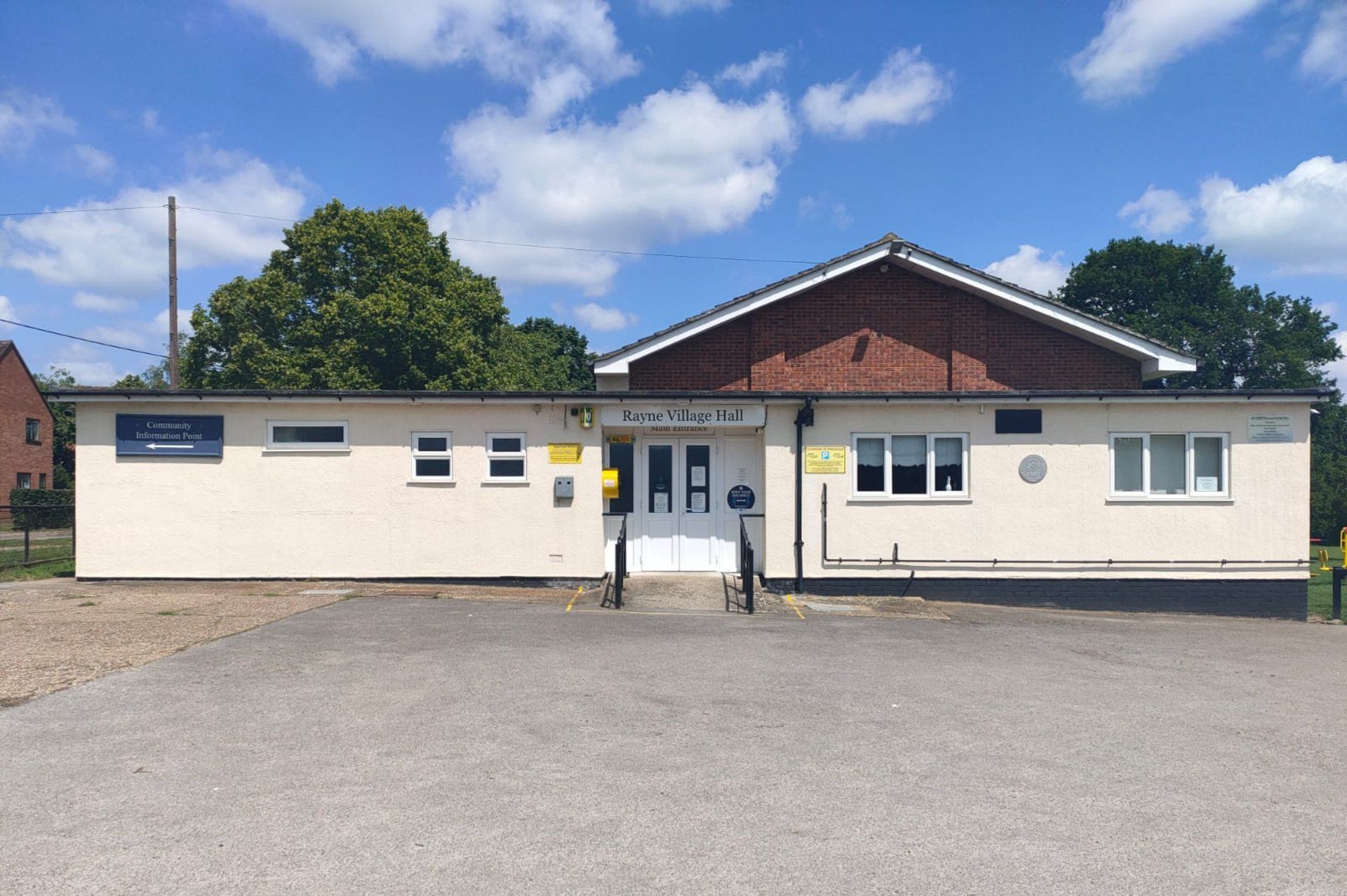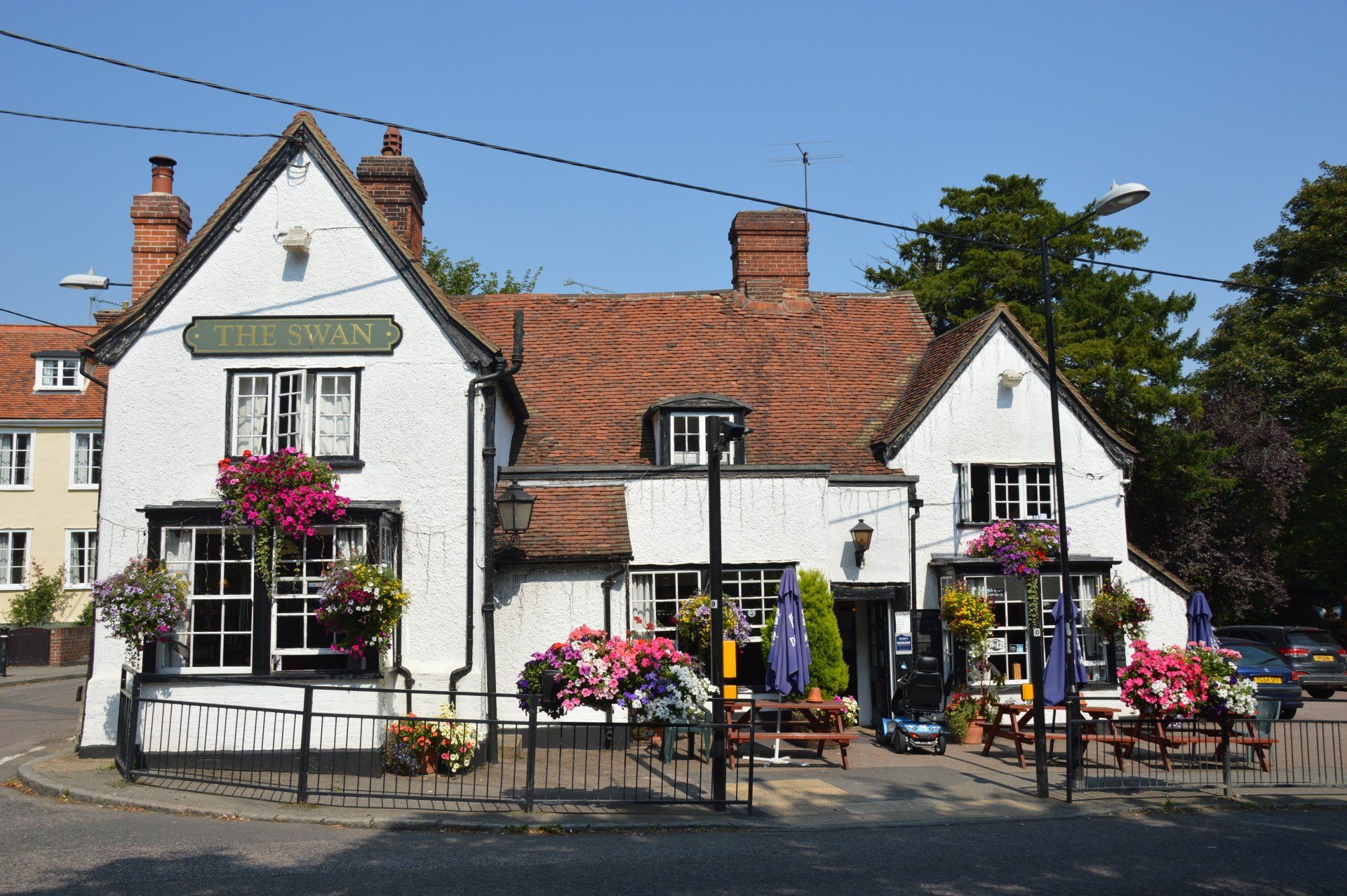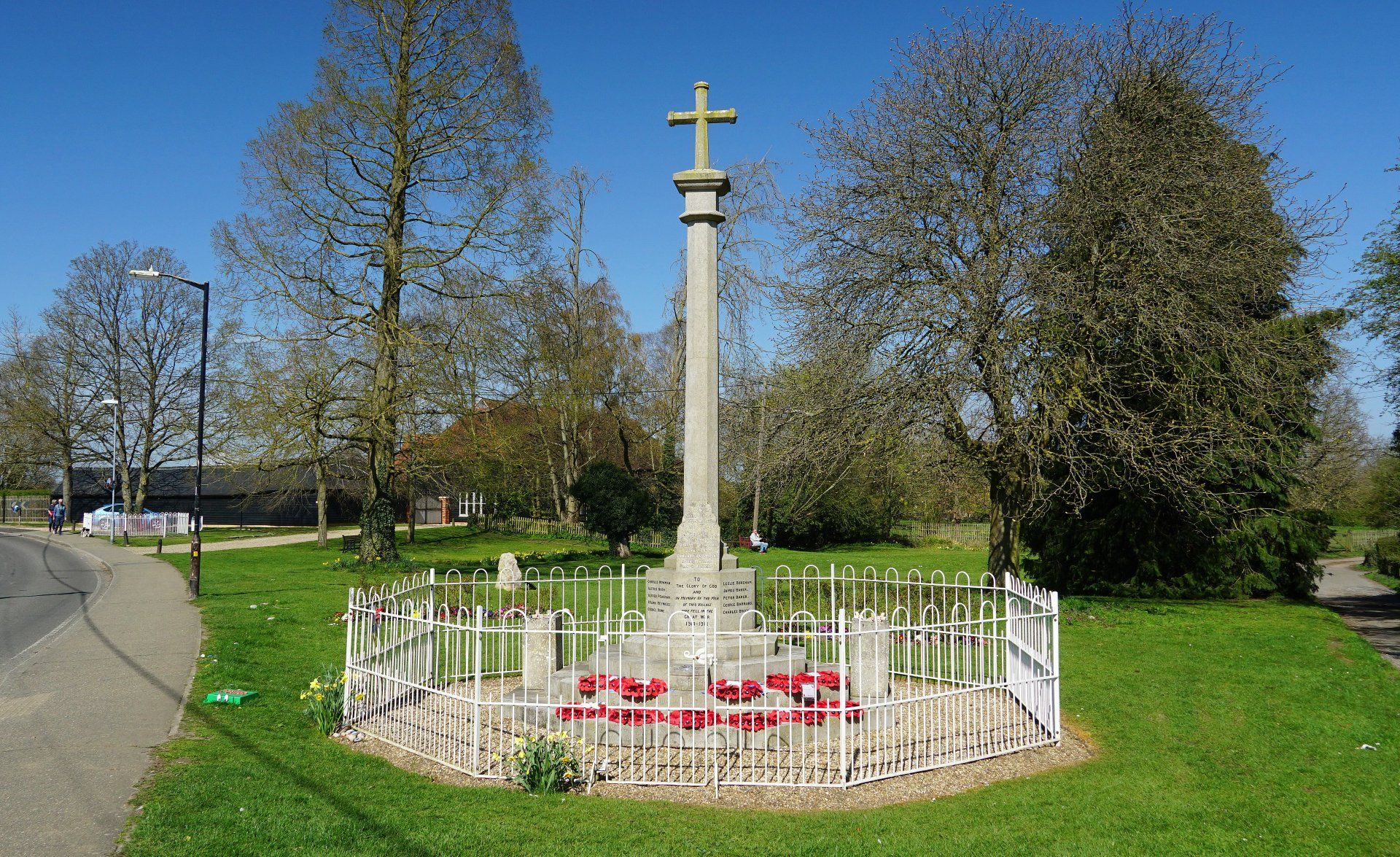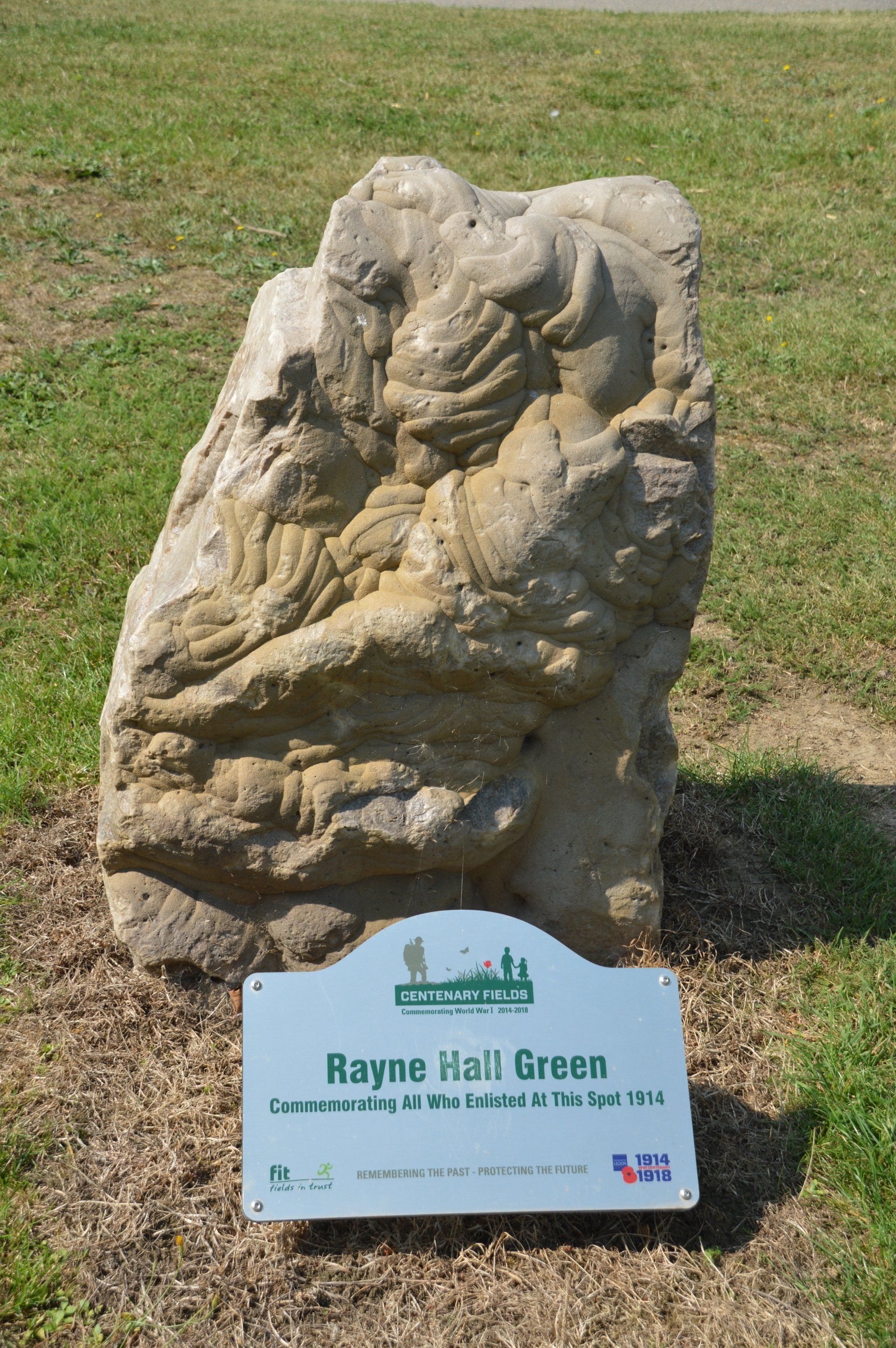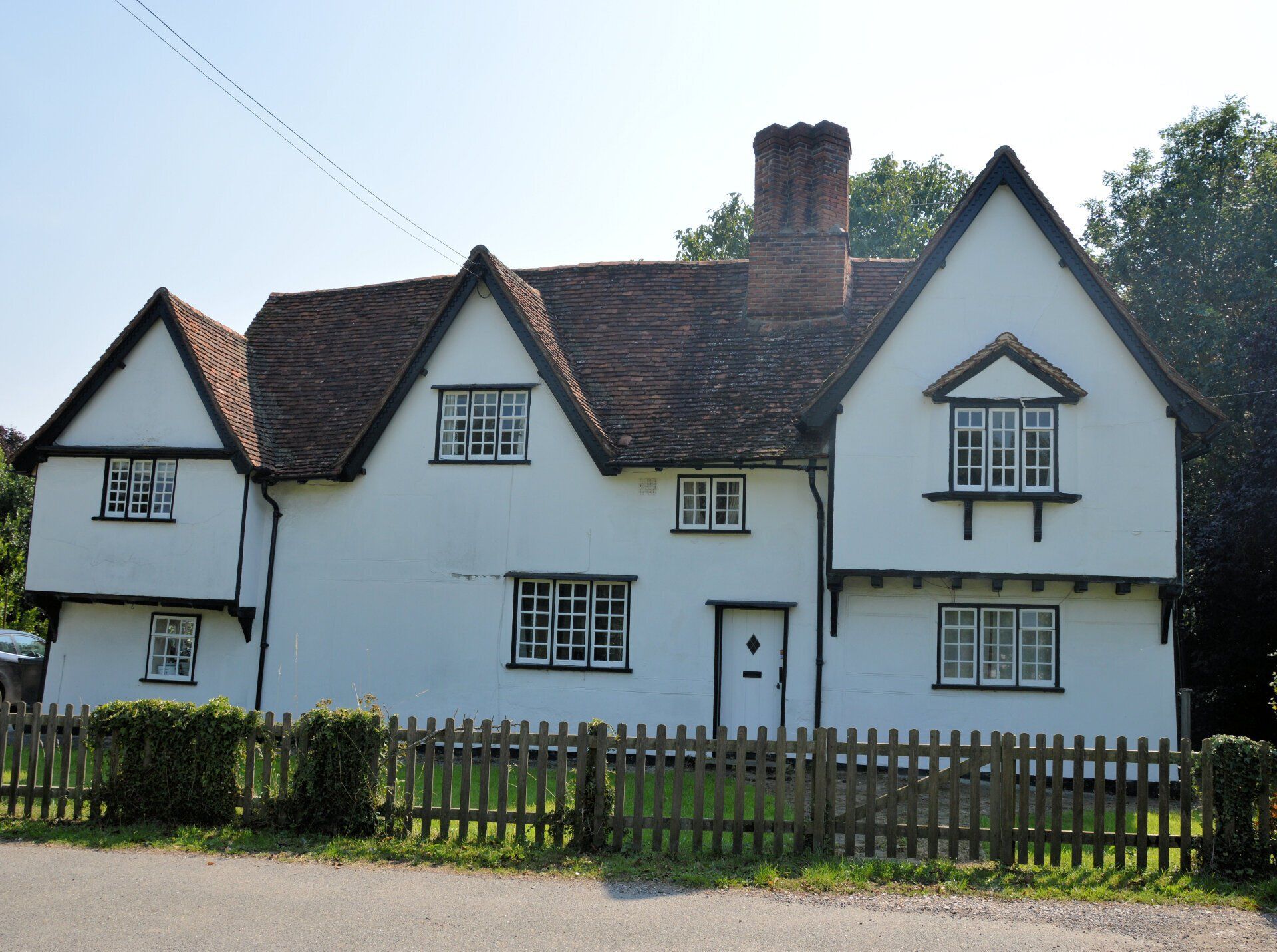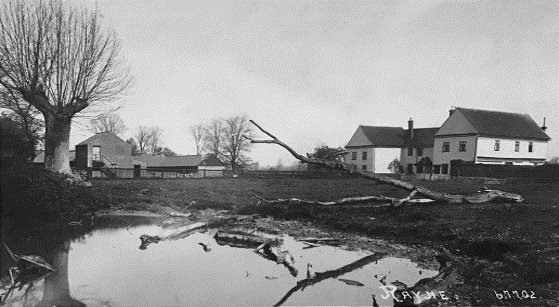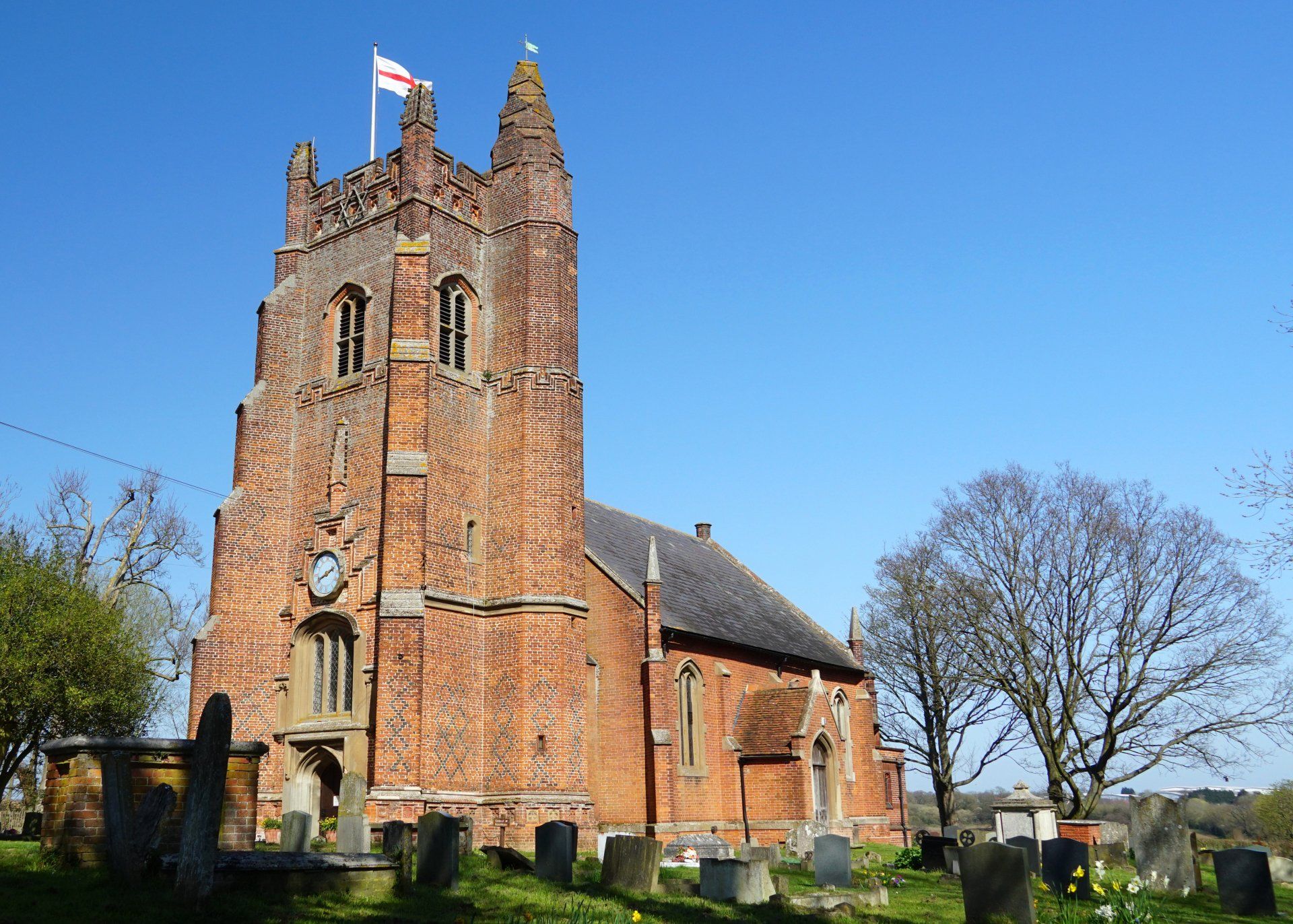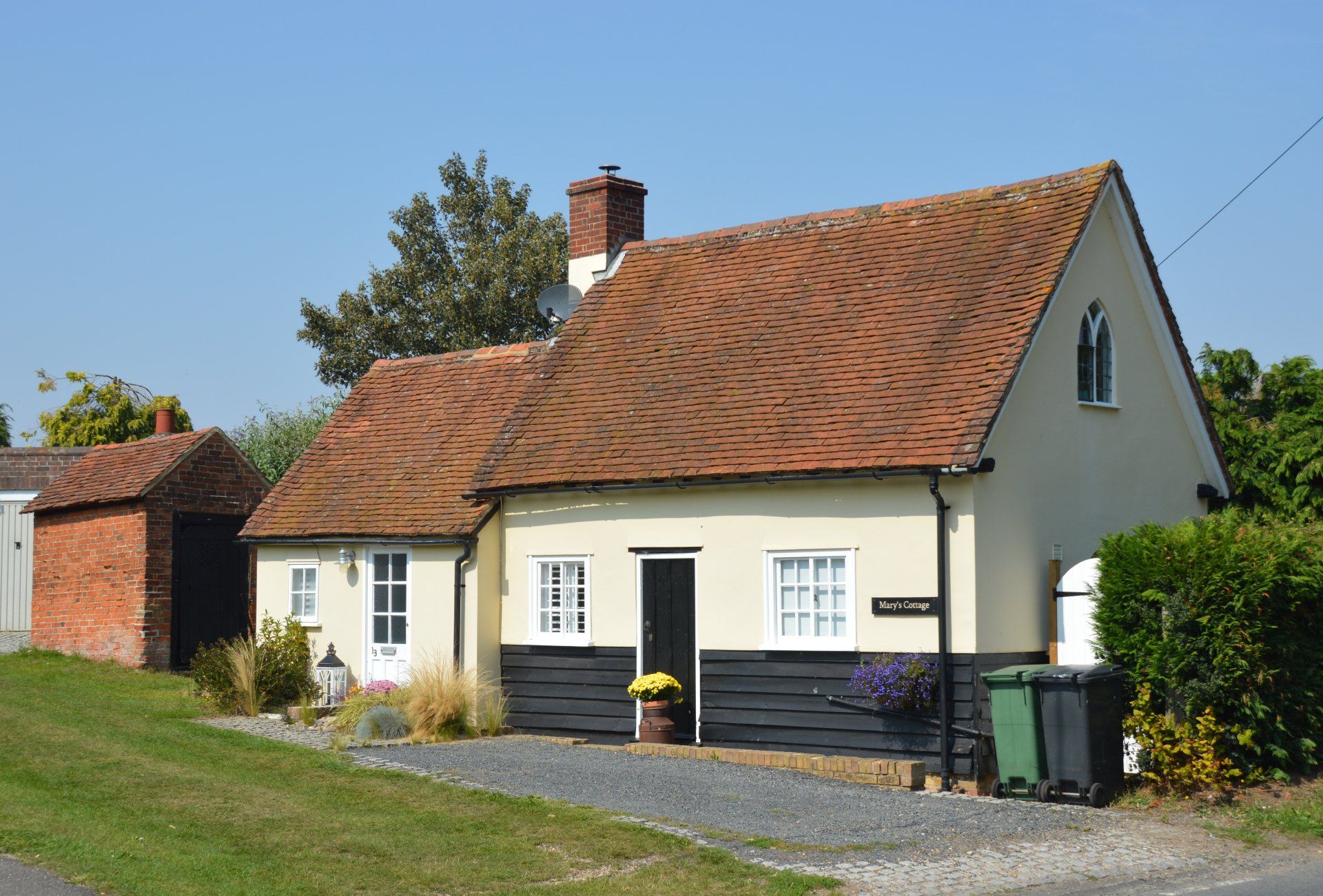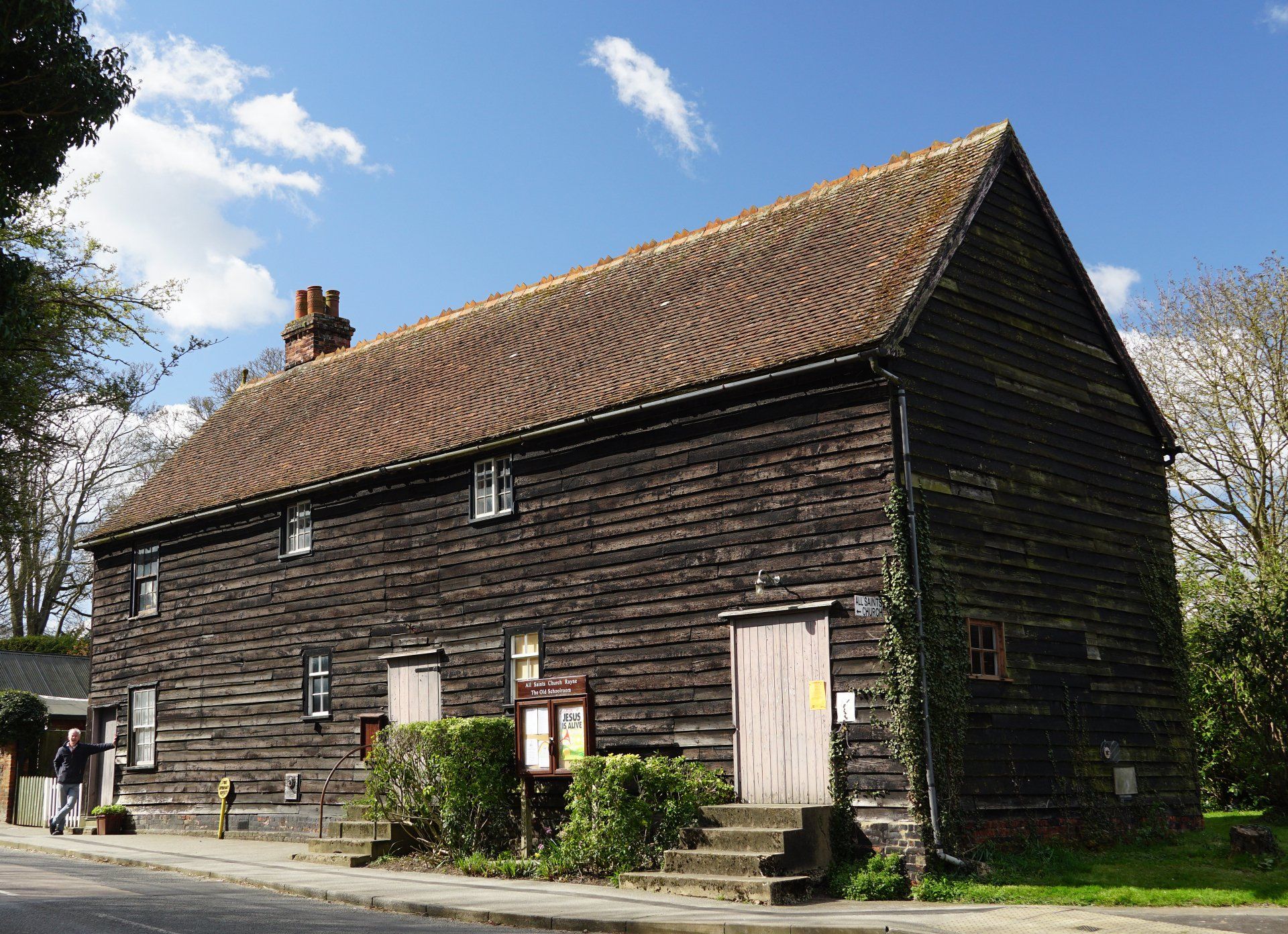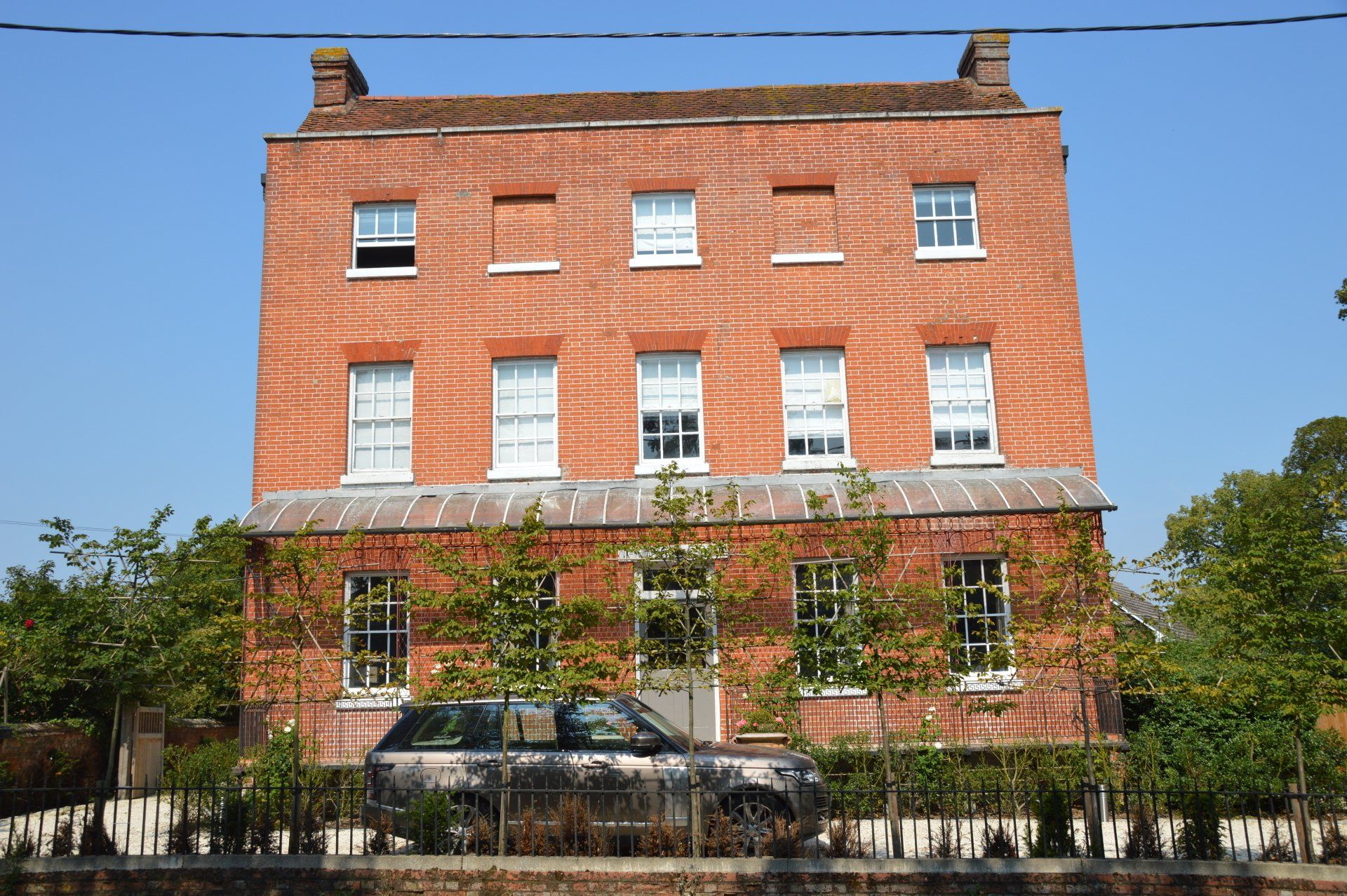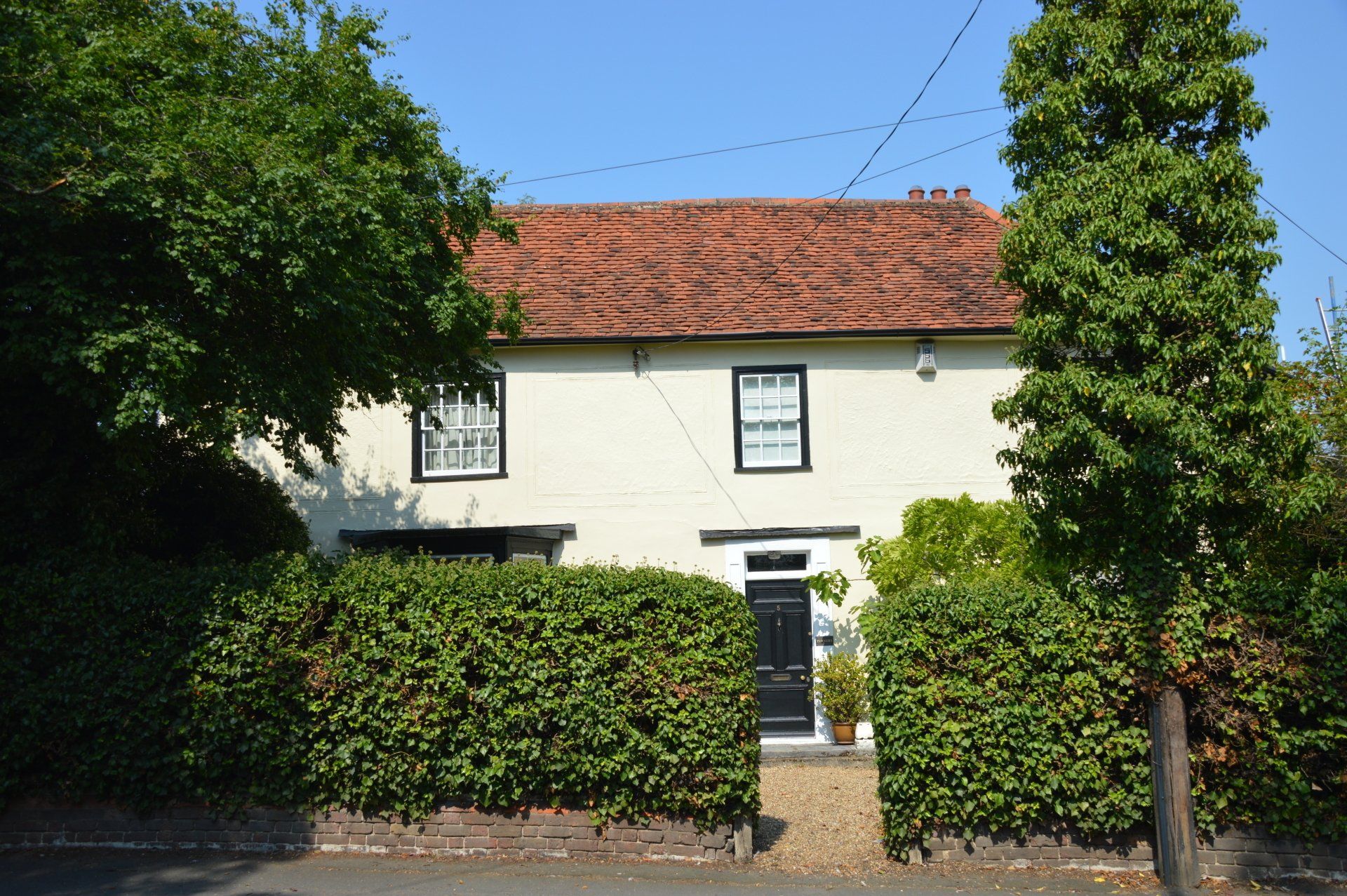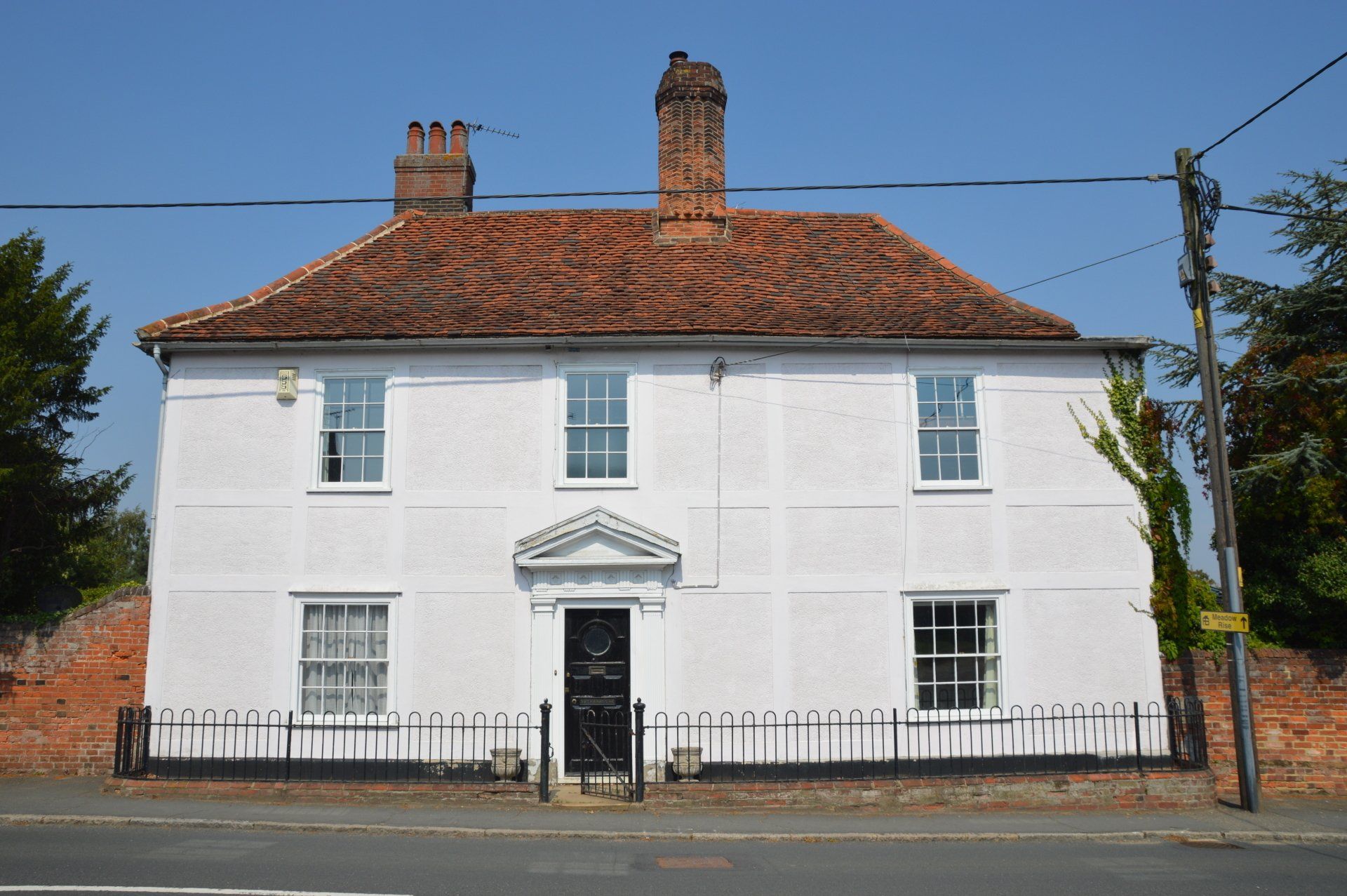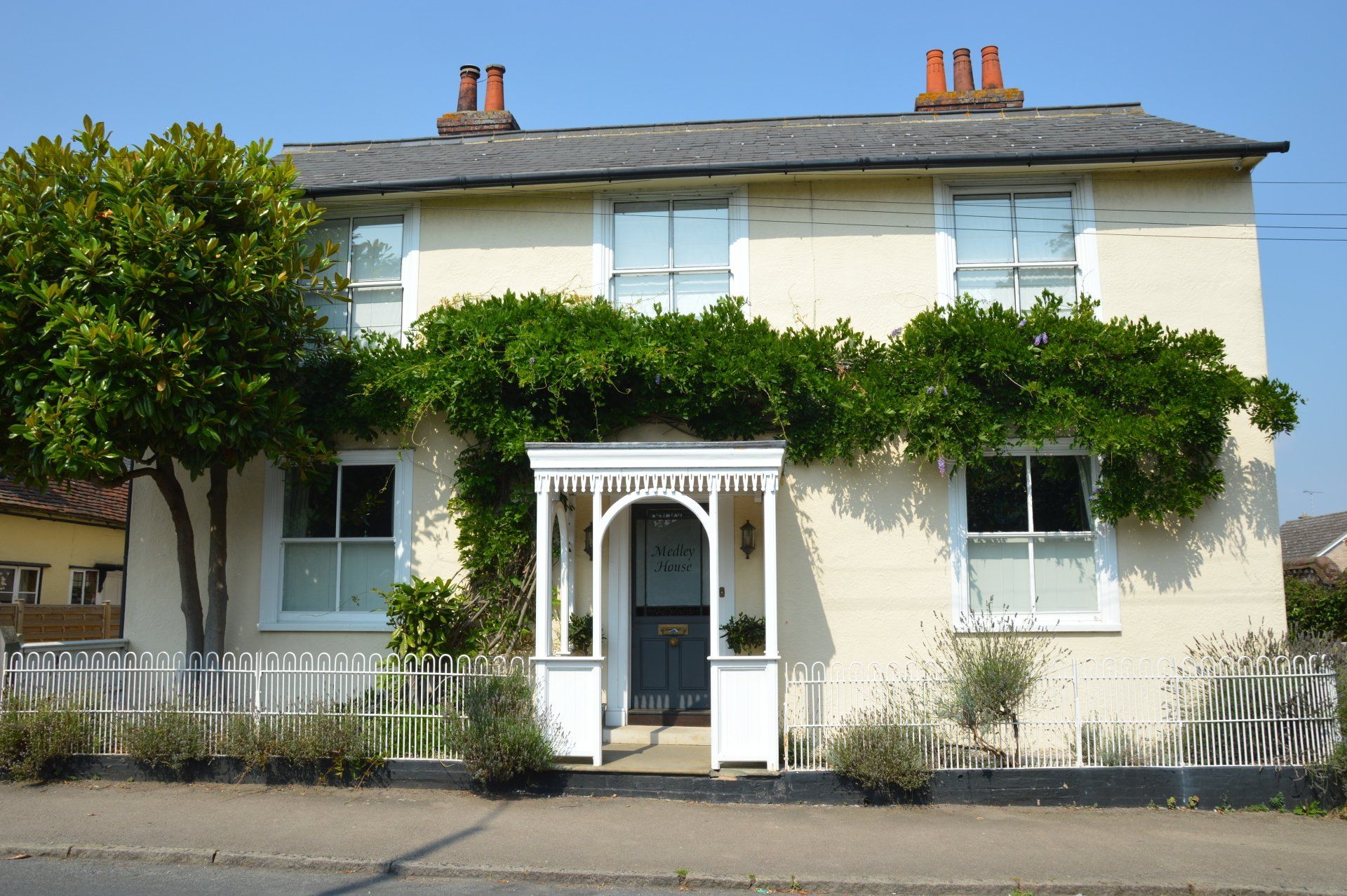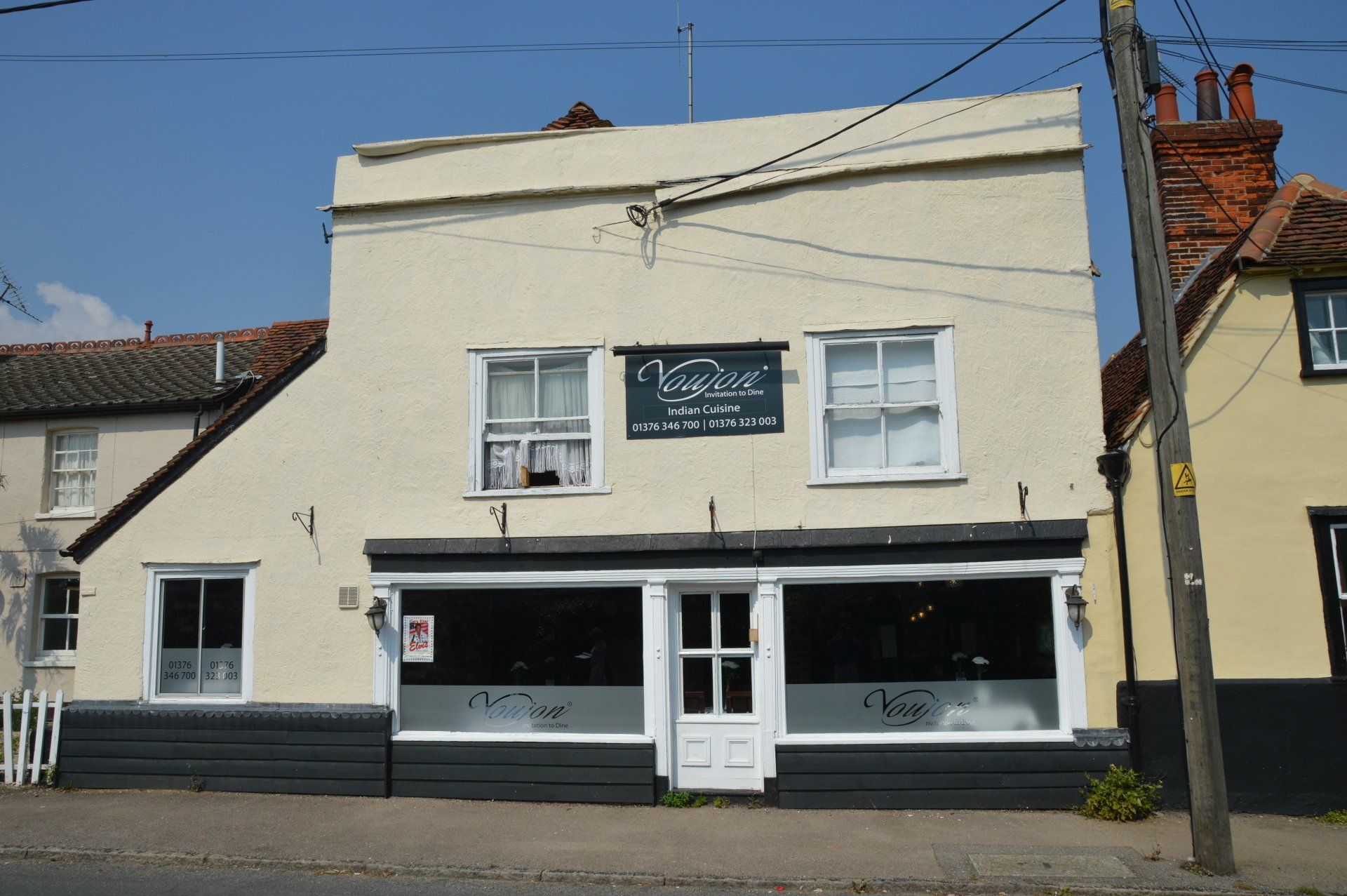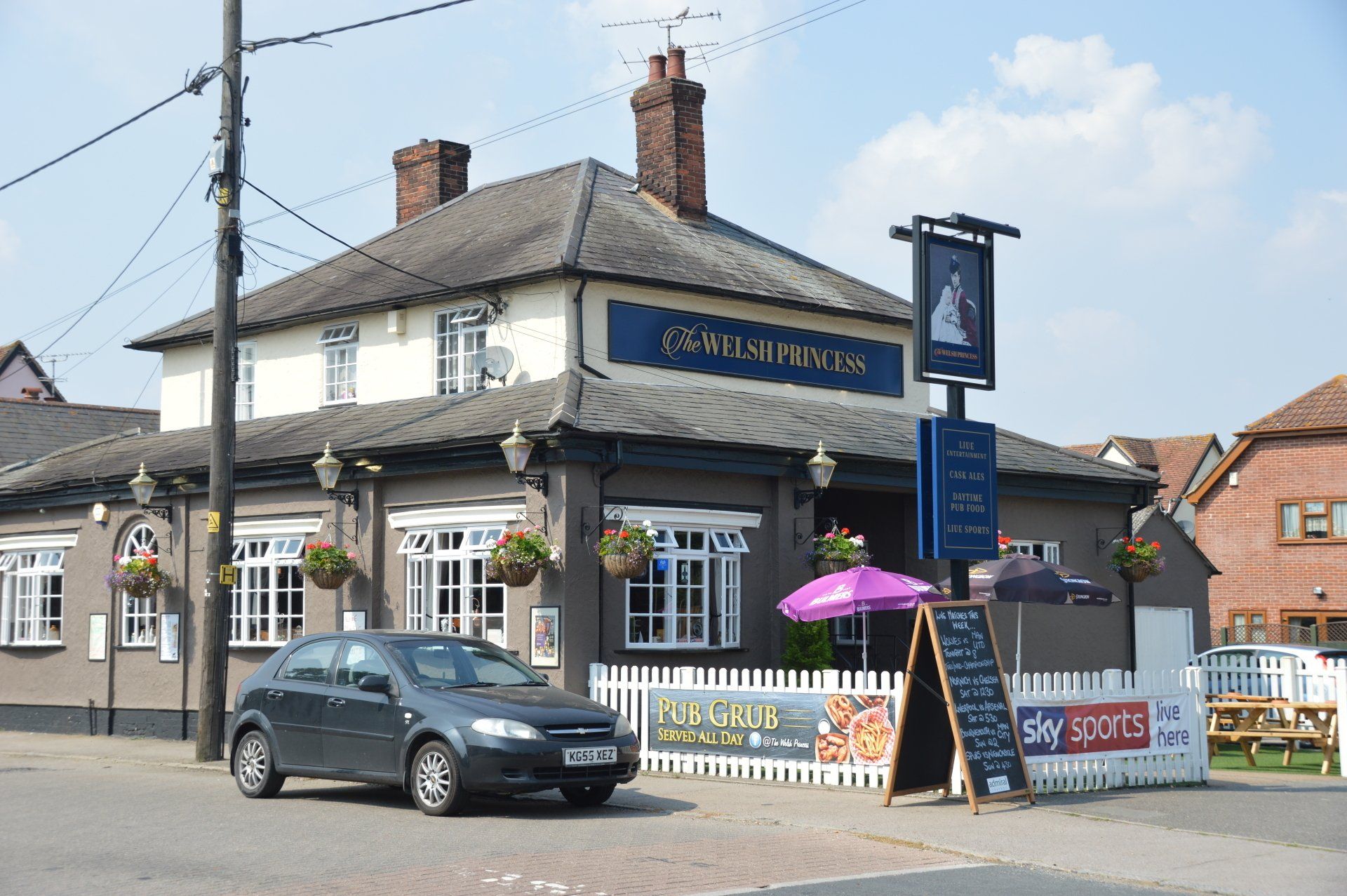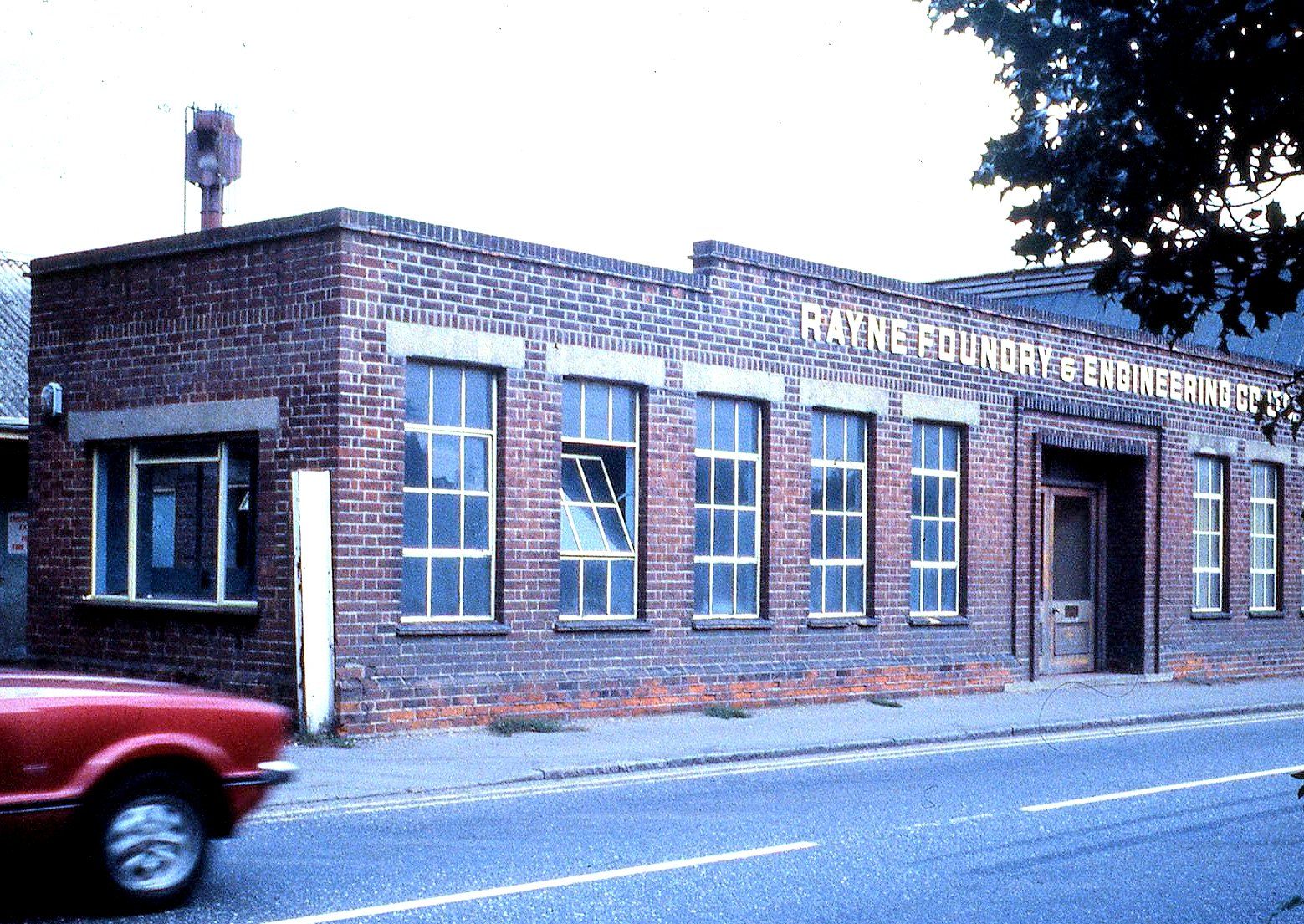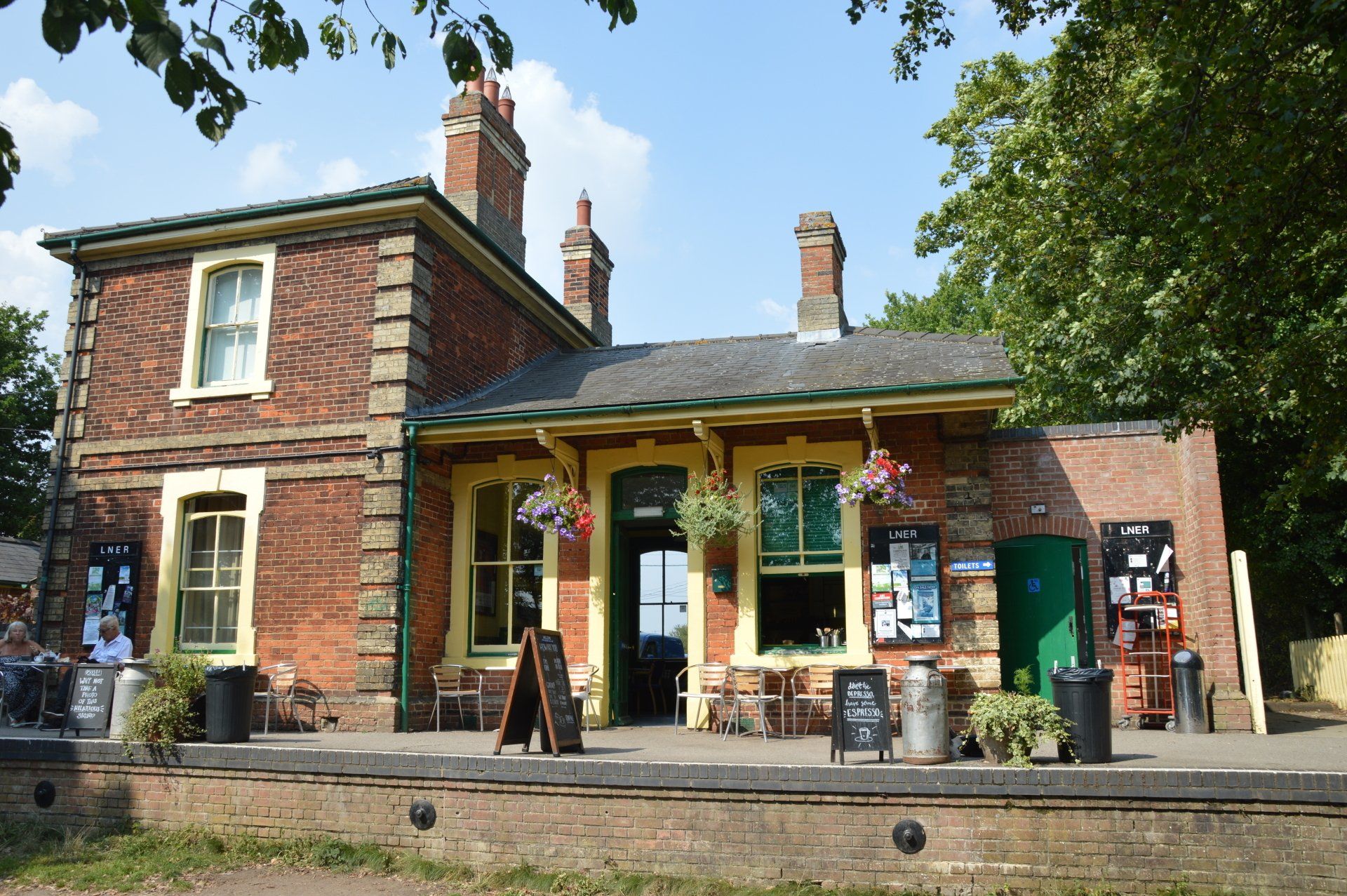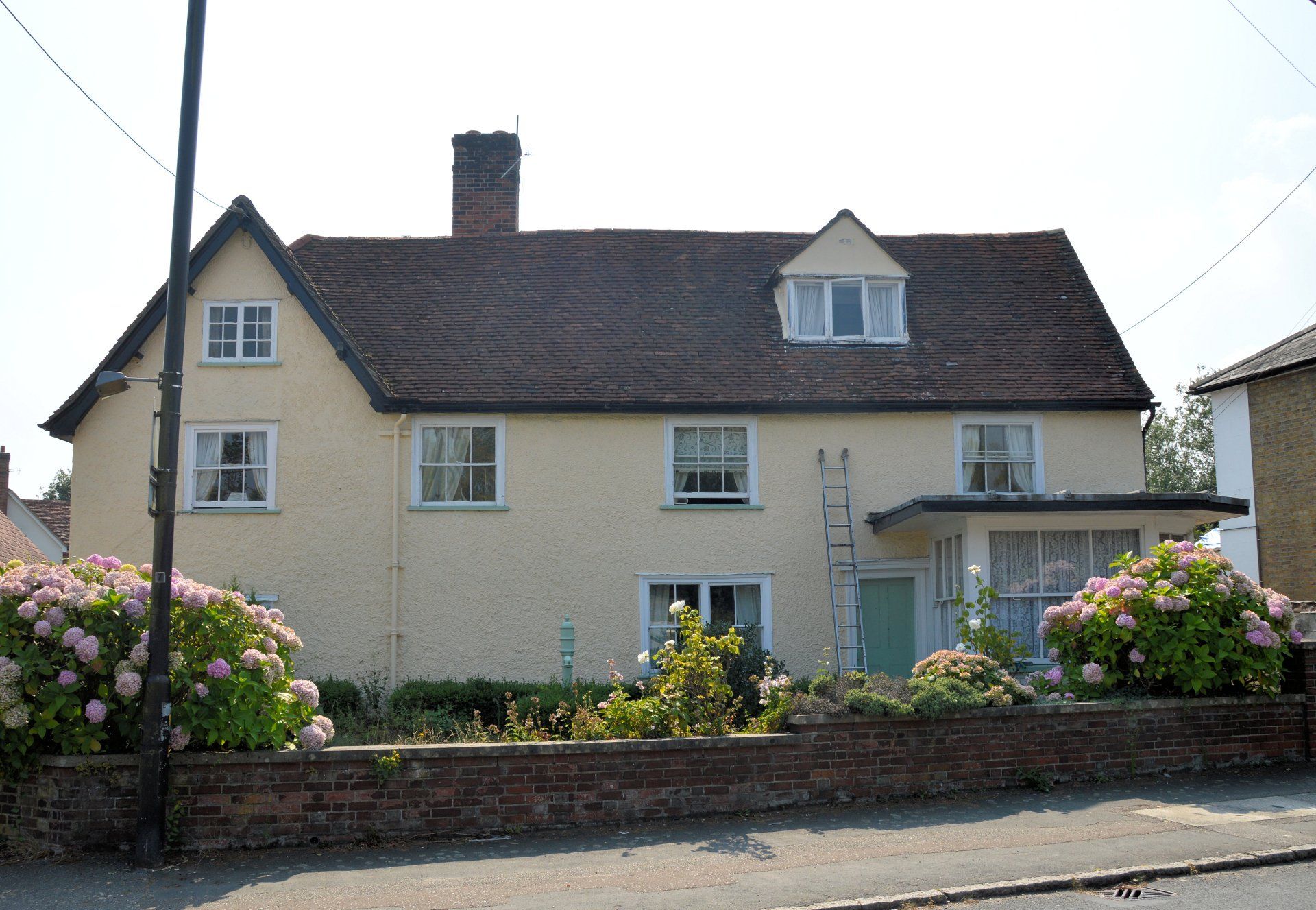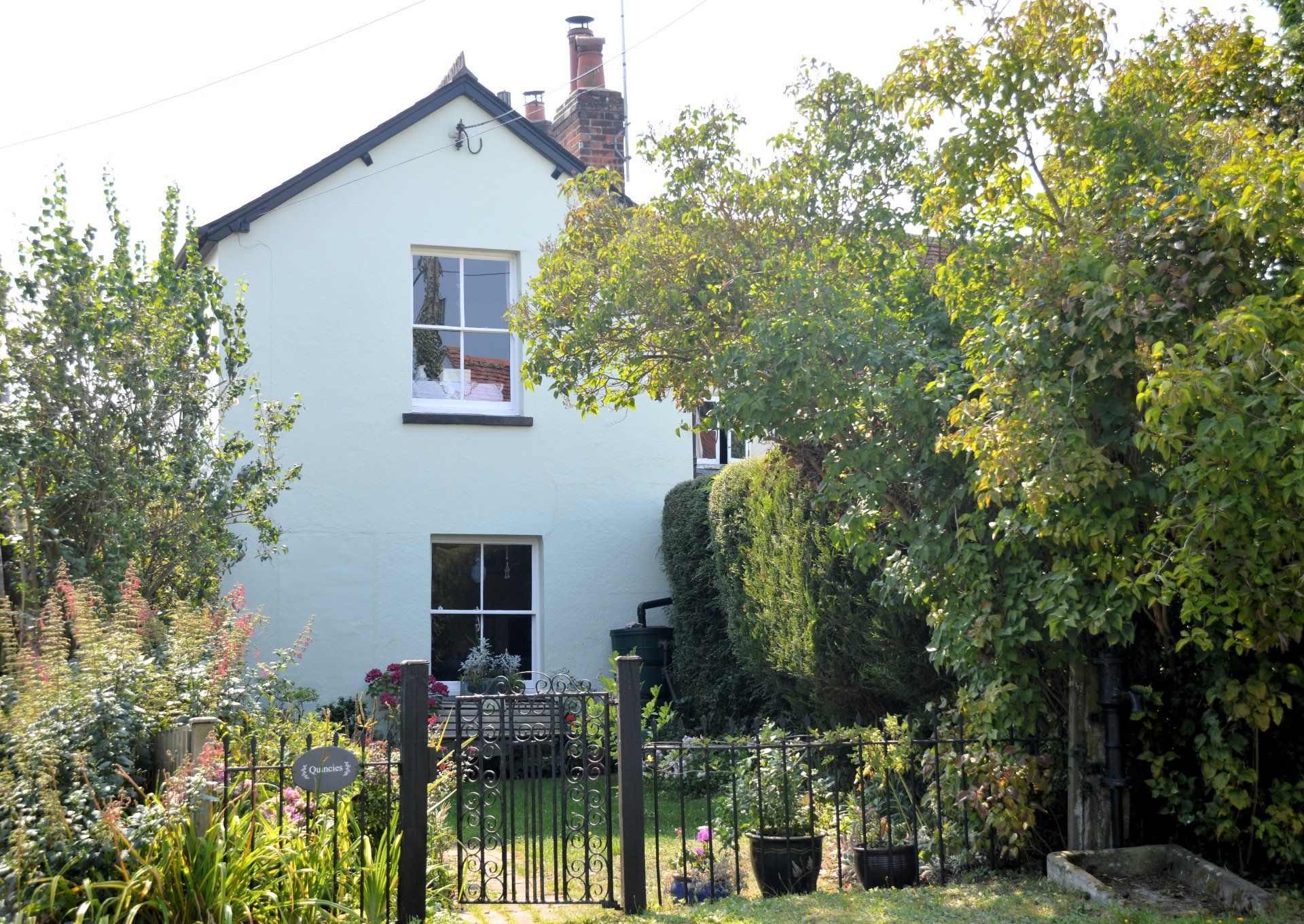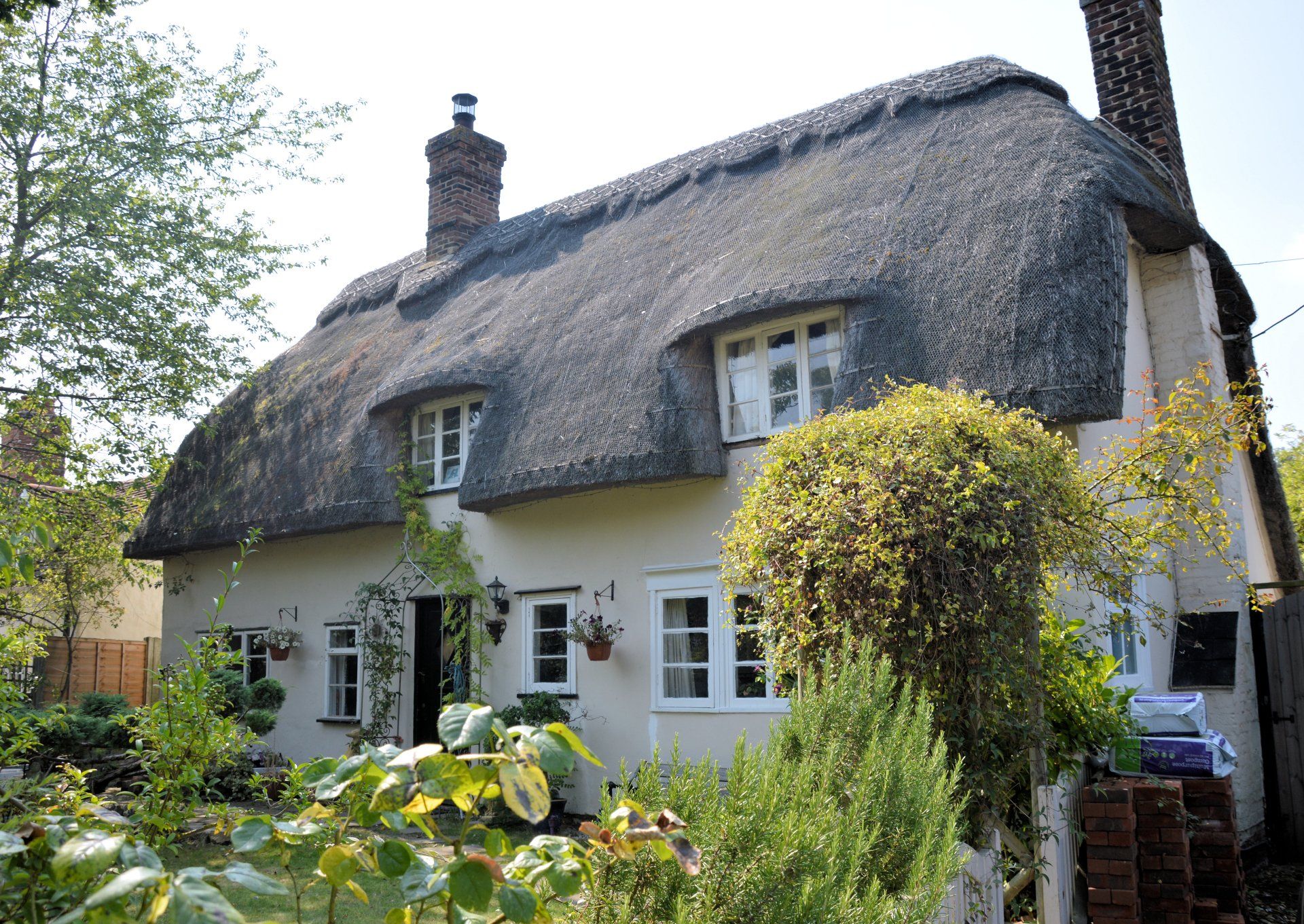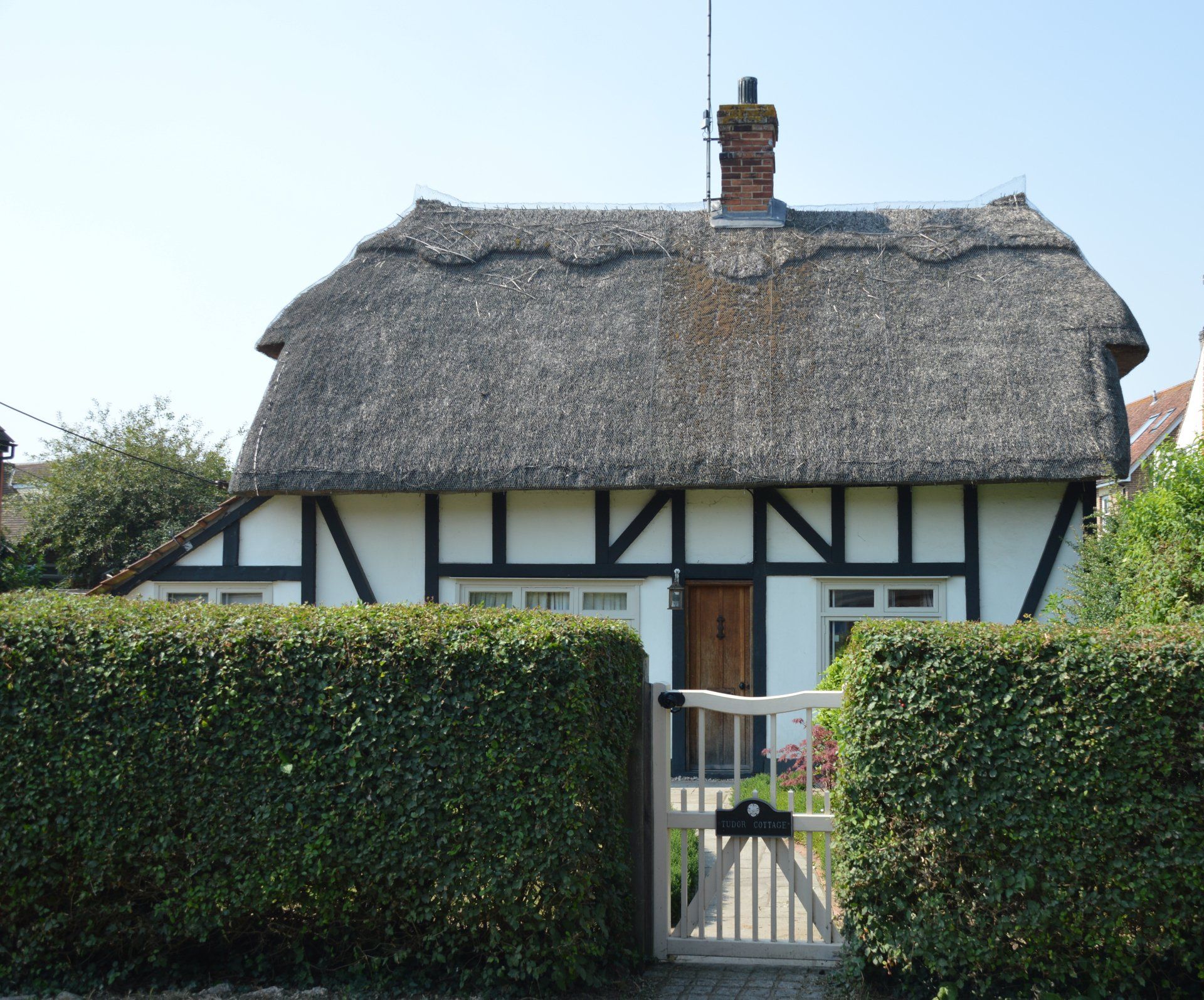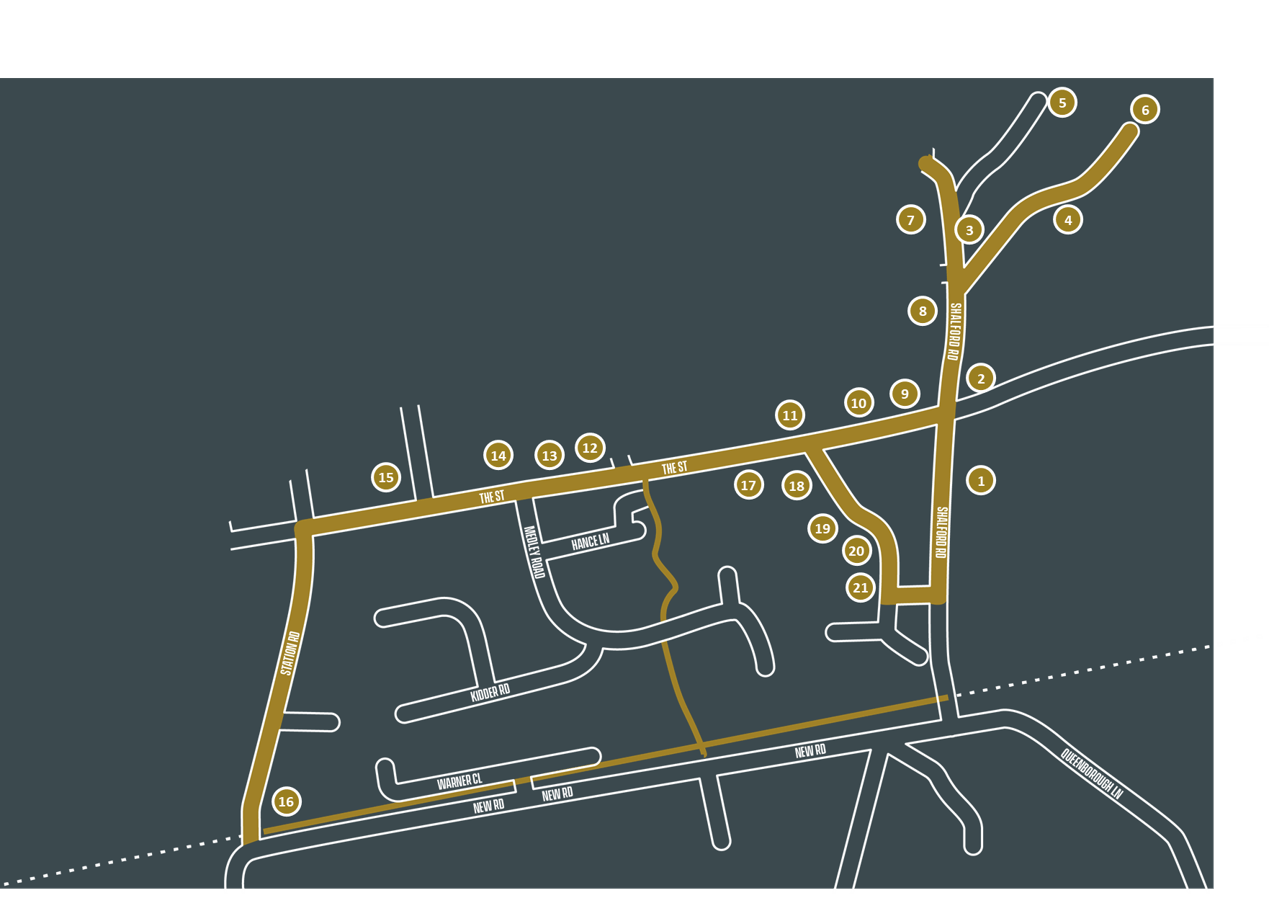
Rayne Heritage Trail
The Rayne Heritage Trail has been created as part of a commitment to the Heritage Lottery Fund, in return for its generous support for the renovation and repair of All Saints Church. The project coincided with COVID-19, when the inhabitants of Rayne returned to a state of lockdown last experienced in 1665. It is hoped that those following the Heritage Trail will enjoy the experience and gain an insight into Rayne’s past and present.
Heritage Trail
Rayne has a rich heritage, with All Saints Parish Church as a centre for its community for over 1,000 years. It has a current population of around 2,300. The Rayne Heritage Trail offers a circular walking route that highlights some of the 67 Grade I and II listed structures in Rayne. The route is considered “easy” walking. If taken at a reasonable pace, it should take approximately 1¼ hours to complete.
Roman Period
Rayne’s central axis, “The Street” maintains the line of the major Roman road, “Stane Street”, from Colchester to Braughing in Hertfordshire. Although Braintree had extensive Roman industrial activity, little has been found at Rayne. Limited excavation has revealed agricultural activity with field systems and enclosures, along with evidence for a potential Roman heated building somewhere in the vicinity.
Saxon & Norman Periods
Rayne was part of the Saxon administrative area, known as the Hinckford Hundred. It was the 10th largest village, with Finchingfield the biggest and Braintree the smallest.
Rayne has 5 entries in the Domesday Book, listing a range of ploughland, meadow and livestock, plus mills. It was assigned the highest amount of tax in the Hundred. Domesday also records 15 slaves in Rayne – people with no property, who could be bought or sold by the Lord.
Modern History
Rayne maintained its agricultural basis for many centuries. Gradually consolidation occurred, so by 1800 almost all the land was owned by a dozen farmers. The arrival of the railway in 1869 enabled the agricultural produce to be transported to London, whilst providing the catalyst for the expansion of industrial activity at Rayne Foundry. Both World Wars saw members of the village answering the call to arms, whilst others produced munitions at Rayne Foundry, or vital food supplies. Households also provided billets for soldiers of the Sherwood Foresters and King’s Royal Rifles during WW2.
Major changes occurred towards the end of the 20th century. Rail services ceased in 1971, and the track was removed soon after. The old line became the Flitch Way Country Park in 1994. Rayne Foundry closed in 2001 and as industry retreated, land was reused for housing, leaving the village that is seen today.
Heritage Trail Locations
Heritage Trail Map
The Risk Assessment for the Rayne Heritage Trail can be viewed here.
27
28
29
30
31
1
2
3
4
5
6
7
8
9
10
11
12
13
14
15
16
17
18
19
20
21
22
23
24
25
26
27
28
29
30

